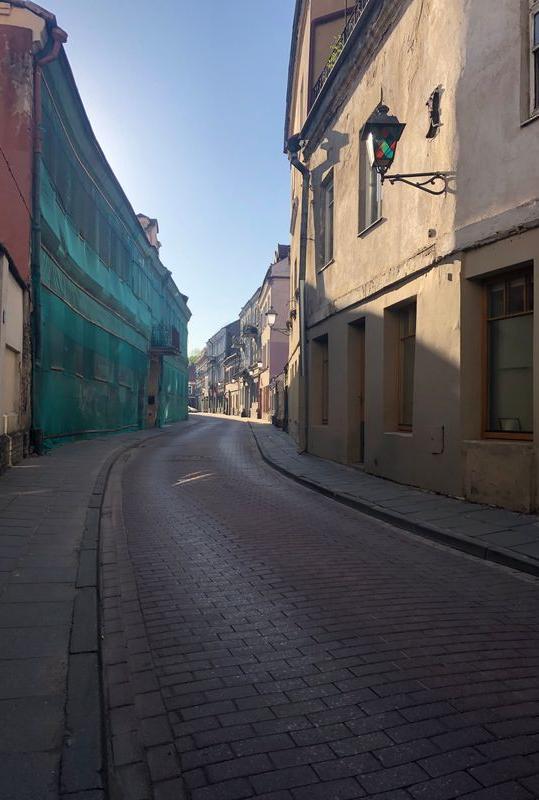This square did not exist up until the end of the Second World War. You can notice in the scheme of the Great Vilna Ghetto, that there was a densely built-up area where you stand right now.On June 24th, 1941, Nazi Germany entered Kaunas and Vilnius, and almost a week later controlled the entire territory of Lithuania. With the assistance of local Lithuanians, the first massacres began in the early days of the occupation. At the beginning of July, several discriminatory laws had been passed. They obliged Jews to wear distinguishing badges, introduced a curfew on them, and only allowed them to shop in certain stores at specific hours. Means of transport, radios, works of art and other possessions were confiscated from Jews. Exploitation of Jews also began by forcibly engaging many among them in hard physical labour. During the middle of July, mass arrests of Jews commenced. Hundreds of the detained Jews were tortured in the Lukiškės Prison, and afterwards were transported to an outer suburb of Vilnius – Paneriai – where they were shot.
5. Vilna Ghetto
Stories
The Early Days of Nazi Occupation
The Cleansings
Throughout the months of September to December, the so called Aktions (En. Actions) – the cleansings – were carried out intensively. During this time, thousands of people were taken out from the Ghetto and shot dead in Paneriai. Unemployable Jews were the first ones to be exterminated, thus by the end of October, the Small Ghetto had been liquidated – almost all Jews residing there had been executed. During the four months since the founding of the Ghetto almost half of its residents – 20 thousand Jews – were annihilated.The period from early 1942 to April, 1943, could be called “stable”, since mass arrests and executions ceased.
The “Ordinary” Life in the Ghetto”
There was a gradual attempt to create conditions for ordinary life in the Ghetto: library, theatre, kindergartens, schools, hospital, pharmacy, court, post office and similar institutions, common to ordinary life, operated. Life in the Ghetto was administered by the Jewish Council (De. Judenrat) which was located nearby at 8, Rūdininkų st. (building in the yard). The Judenrat did not wield great power. Five sections were subordinate to the Council – Labour, Social Provisions, Technics, Apartments and Health. The most important section was that of Labour since the opportunity to work was often a pre-condition for survival (ORT organisation contributed to the creation of possibilities to work, and thus survival).
Liquidation
The so called “stable” period ended in Spring of 1943. On one day at the beginning of April, 5000 Jews residing in the Vilna Ghetto were shot dead in Paneriai, and in June Nazi leaders ordered the liquidation of all of the ghettos in Europe. The final liquidation of the Vilna Ghetto commenced on the 23rd of September. Residents of the Vilna Ghetto – mostly women and children – were taken to the concentration and extermination camps in Auschwitz, Treblinka and elsewhere, and able-bodied Jews were sent to the labour camps. The few hundred older or sick Jews remaining were shot dead in Paneriai.
Powered by Clio Muse Tours
